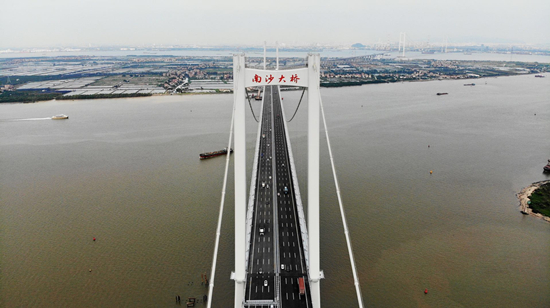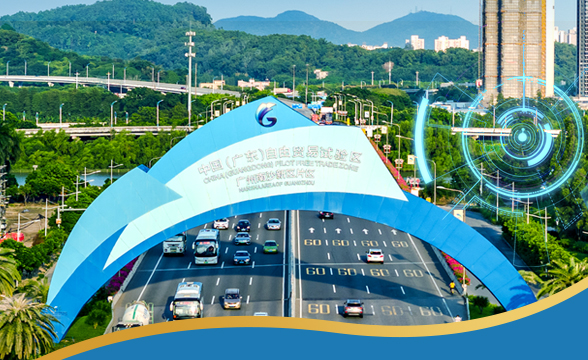Nansha Bridge open to traffic
The Nansha Bridge was officially open to traffic on April 2.The two-way eight-lane bridge has a total length of 12.89 kilometers and is designed for a traffic speed of 100 kilometers per hour and a service life of 100 years.

Aerial view of the Nansha Bridge[Photo by Liu Wei/gznsnews.com.cn]
The route starts from Dongchong Town, a village of Nansha district, and leads to the south ring section of the national highway, the Guangzhou Ring Expressway.
It is also connected to the Guangzhou-Zhuhai Expressway, passing through the districts of Nansha and Panyu in Guangzhou, and crossing the Dasha Waterway of the Pearl River.
The end point is connected with the Guangdong-Shenzhen Expressway, and interfaces with the Heyuan-Huizhou-Dongguan Expressway. Now that the new bridge is in place, the Guangdong-Hong Kong cross-border bus has adjusted a number of routes and shifts in the Pearl River Delta and western Guangdong area.
Thirty-four shifts are in Kaiping, Enping, Zhaoqing, Xinxing and Guangning, passing the Nansha Bridge to Hong Kong. Zhang Guangyou, head of the Guangdong-Hong Kong company, said, "With the help of the Humen Bridge, it is estimated that the mileage will be reduced by about 7 kilometers and at least 20 minutes can be saved."
During the upcoming Tomb Sweeping holiday, the Nansha Bridge will experience rush hour traffic. It is designed to have an average daily traffic of 100,000 vehicles.
According to preliminary analysis by the business department of the Provincial Transportation Group, after the opening of the Nansha Bridge, it is estimated that 30 percent of the traffic of the Humen Bridge will be diverted as will 17 percent of the traffic of the Huangpu Bridge.
In addition, before the opening ceremony, many builders involved in the project construction took photos of the scene. A staff member surnamed Li, said that he was very proud to be able to participate in the construction of the bridge.
All rights reserved. Presented by China Daily










